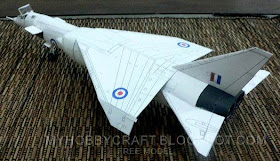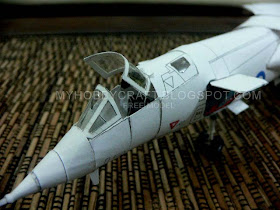 The Abrams Explorer, built in 1938, was the only one ever created and was uniquely designed for aerial survey and mapping functions. By featuring obstruction-free camera platforms, Abrams Air Craft CEO Dr. Talbert Abrams planned to market the plane to the United States armed forces for surveys, mapmaking, and aerial photography. However, on the brink of World War II, the military opted for the more survivable, converted high-speed fighter aircraft for photo reconnaissance.
The Abrams Explorer, built in 1938, was the only one ever created and was uniquely designed for aerial survey and mapping functions. By featuring obstruction-free camera platforms, Abrams Air Craft CEO Dr. Talbert Abrams planned to market the plane to the United States armed forces for surveys, mapmaking, and aerial photography. However, on the brink of World War II, the military opted for the more survivable, converted high-speed fighter aircraft for photo reconnaissance.
The aircraft was successfully tested and used for government contract survey work until the beginning of the war. For unobstructed photography the Explorer featured a forward glass crew nacelle and camera ports while the usual struts, wing panels, engine cowls, and propeller were placed aft of the cameraman's normal line of sight. Hermetically sealed camera ports maintained cabin pressure up to 20,000 feet. Dr. Abrams lent the Explorer to the National Air Museum in 1948, and it was officially donated in 1973.
Gift of Abrams Instrument Corporation
Date: 1937
Country of Origin: United States of America
Dimensions:
Wingspan: 11.7 m (38 ft. 6 in.)
Length: 8.3 m (27 ft. 9 in.)
Height: 1.9 m (6 ft. 7 in.)
Weight: Empty 1,067 kg (2,350 lbs.)
Materials:
Steel tubing airframe, aluminum and fabric skin
Physical Description: Twin boom 2-seat aerial photography plane with 280 hp Wright Whirlwind R-975 E-3 engine sourcetestbuild



the decal number its quite bigger.I'll fix that one


not so clean on canopy...T_T



 sorry guys, some of the progress pics is accidentally erase..my bad..
sorry guys, some of the progress pics is accidentally erase..my bad..


 instruction
instruction




 The British Aircraft Corporation TSR-2 was a cancelled Cold War strike and reconnaissance aircraft developed by the British Aircraft Corporation (BAC) for the Royal Air Force (RAF) in the late 1950s and early 1960s. The TSR-2 was designed to penetrate a well-defended forward battle area at low altitudes and very high speeds, and then attack high-value targets in the rear with nuclear or conventional weapons. Another aspect of its combat role was to provide high-altitude, high-speed photo reconnaissance, requirements that necessitated incorporating "state-of-the-art" aviation technology that made it the highest-performing aircraft in these roles. Although only one prototype was completed, test flights confirmed that the aircraft would be able to meet its stringent design specifications.
The British Aircraft Corporation TSR-2 was a cancelled Cold War strike and reconnaissance aircraft developed by the British Aircraft Corporation (BAC) for the Royal Air Force (RAF) in the late 1950s and early 1960s. The TSR-2 was designed to penetrate a well-defended forward battle area at low altitudes and very high speeds, and then attack high-value targets in the rear with nuclear or conventional weapons. Another aspect of its combat role was to provide high-altitude, high-speed photo reconnaissance, requirements that necessitated incorporating "state-of-the-art" aviation technology that made it the highest-performing aircraft in these roles. Although only one prototype was completed, test flights confirmed that the aircraft would be able to meet its stringent design specifications.



















































